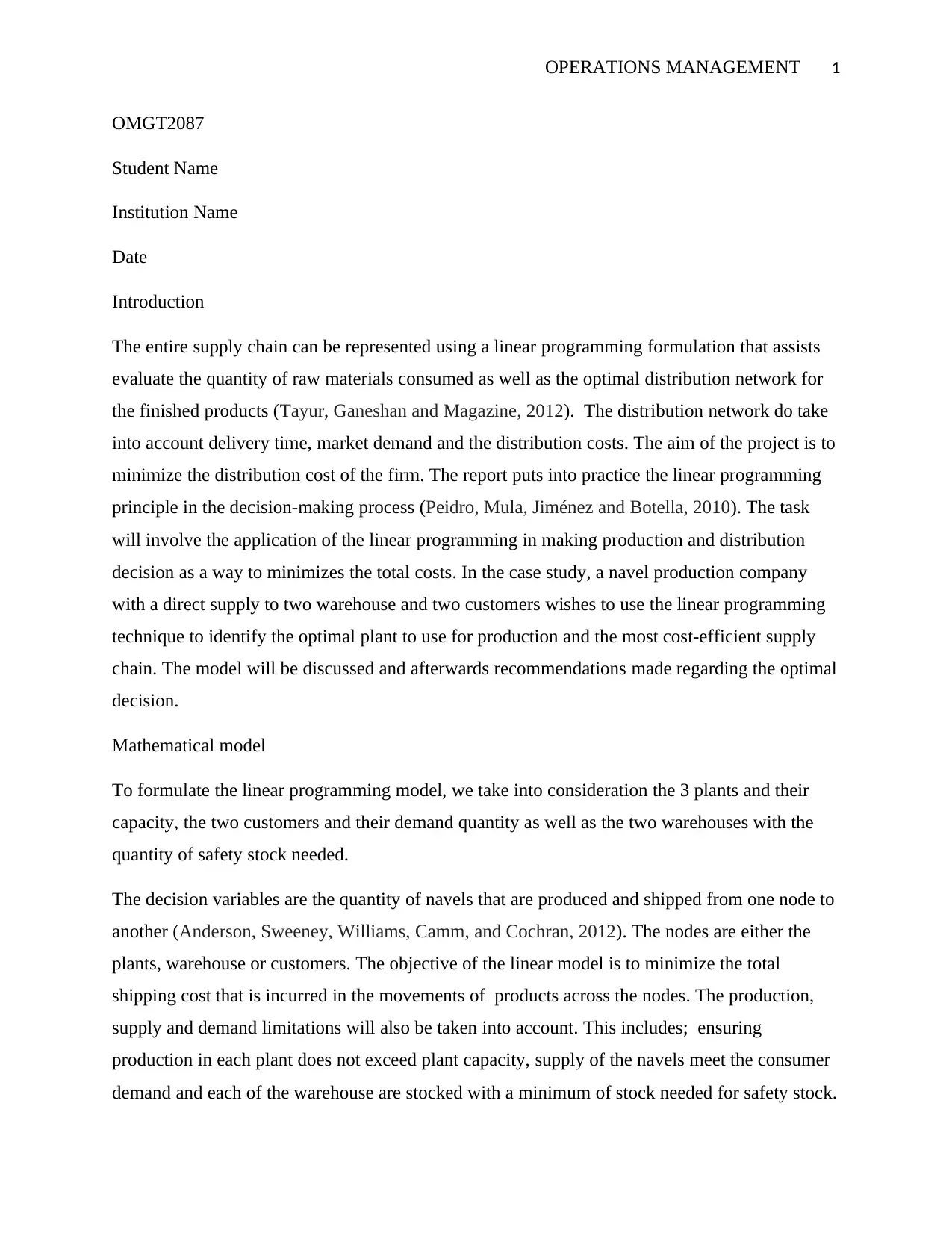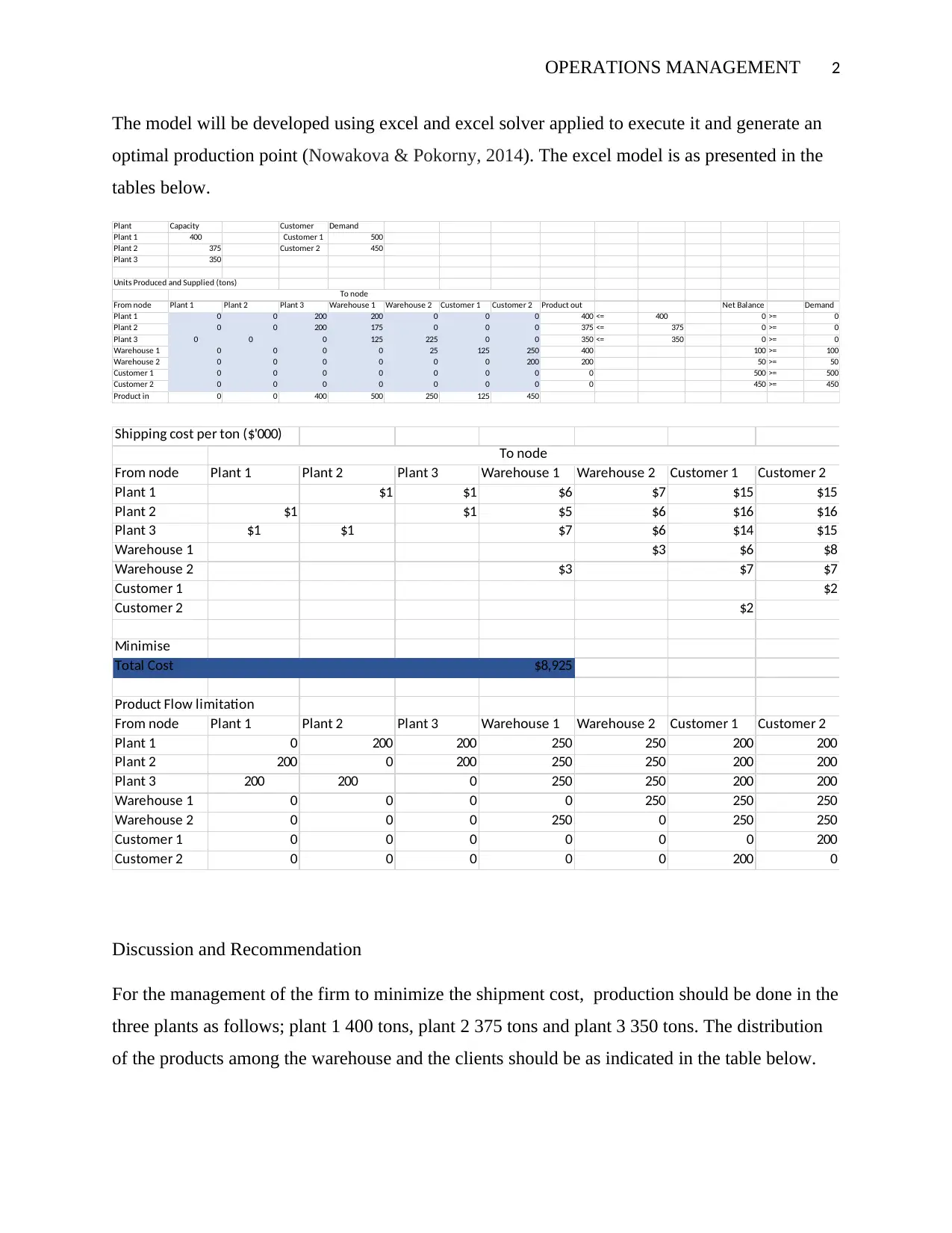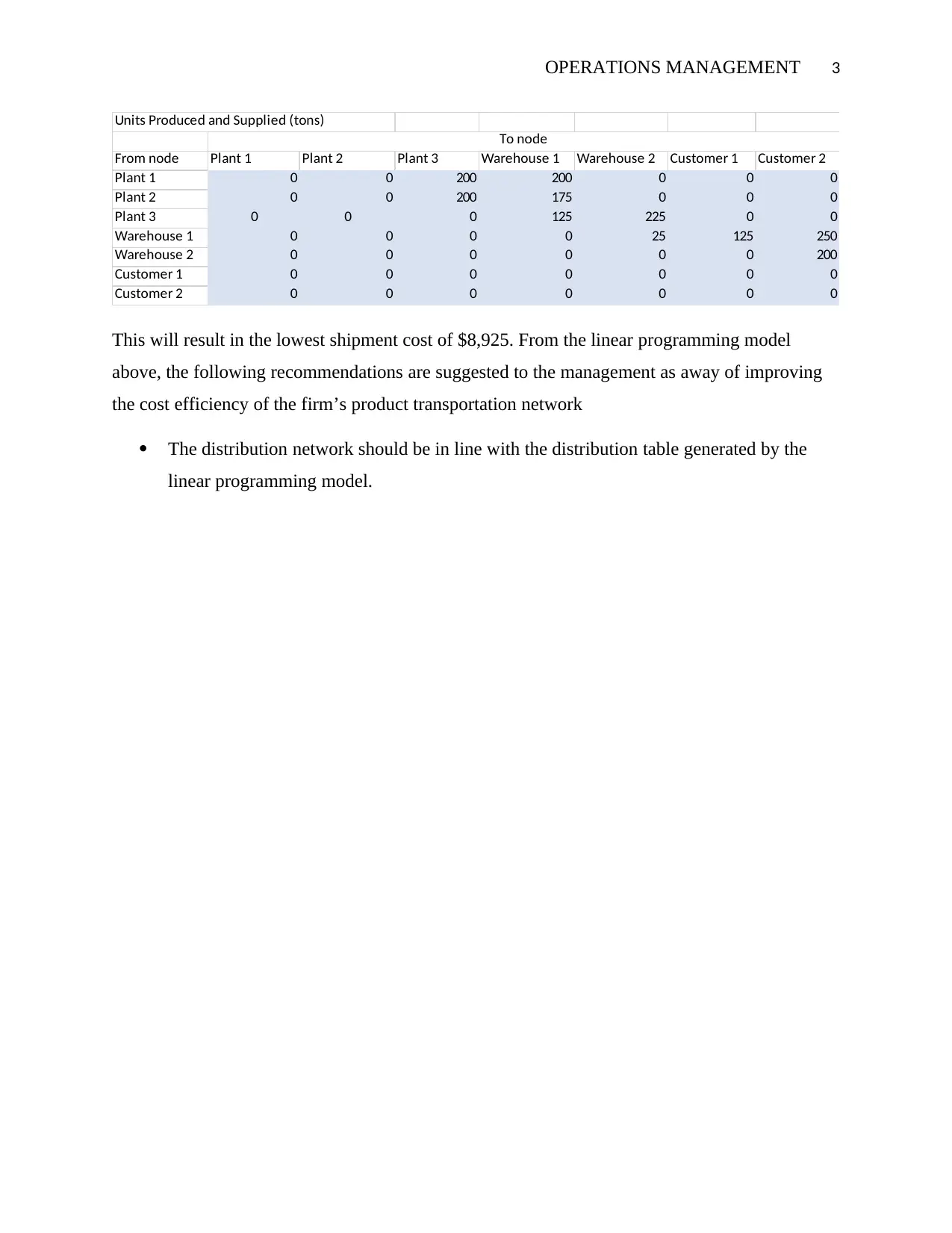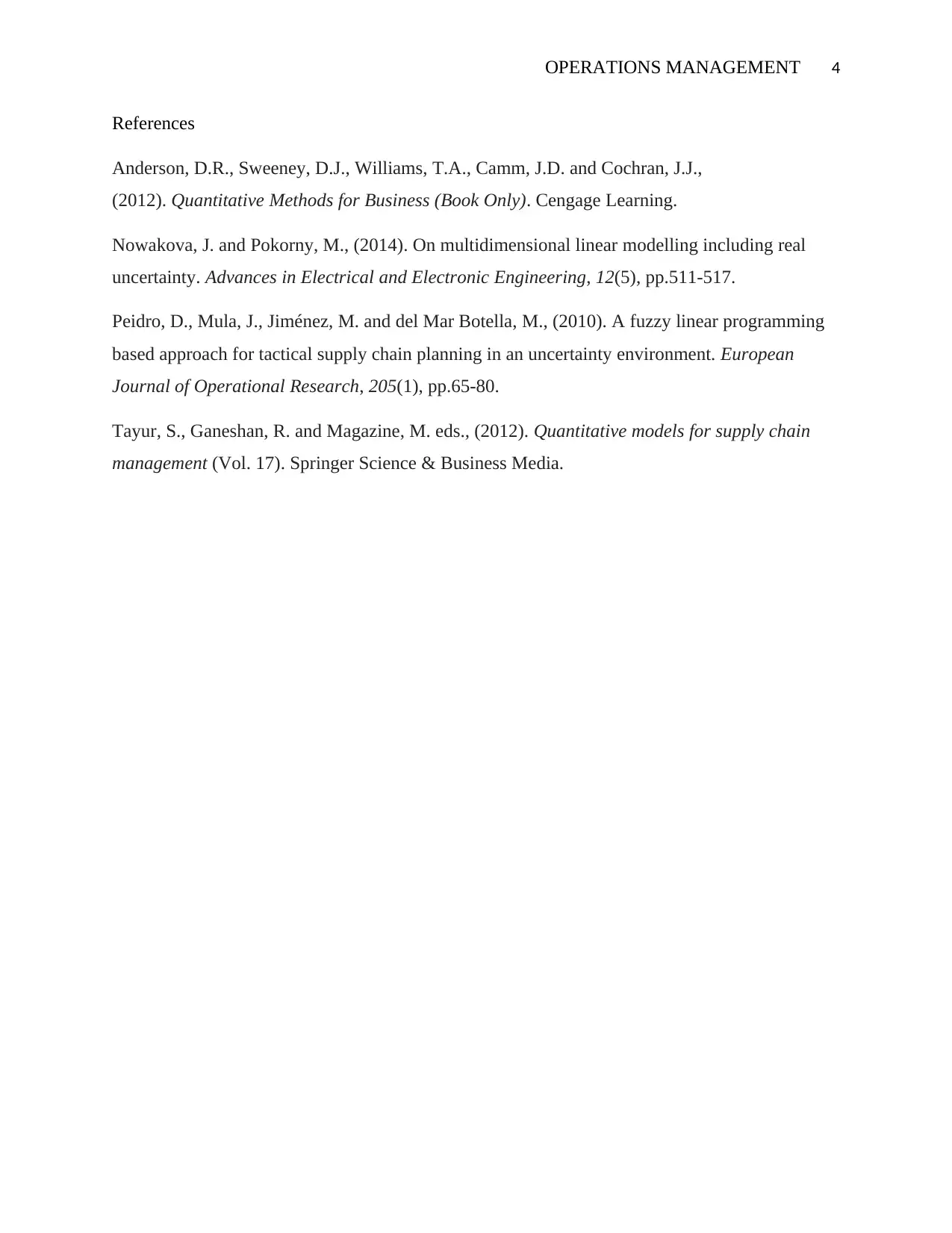OMGT2087 Assignment 1: Optimizing Navel Production and Distribution
VerifiedAdded on 2022/09/13
|4
|672
|33
Project
AI Summary
This project utilizes linear programming to optimize the production and distribution of navels for a company with three plants, two warehouses, and two customers. The objective is to minimize total shipping costs while meeting customer demand and considering plant capacities and warehouse safety stock levels. A mathematical model is formulated, incorporating decision variables for the quantity of navels shipped between nodes (plants, warehouses, and customers). The model is implemented using Excel and Excel Solver to generate an optimal production and distribution plan. The analysis recommends production levels for each plant and distribution routes to minimize costs, resulting in a total shipment cost of $8,925. The project concludes with recommendations for the management, emphasizing the importance of adhering to the distribution network generated by the linear programming model to improve the cost efficiency of the firm's product transportation.
1 out of 4








![[object Object]](/_next/static/media/star-bottom.7253800d.svg)